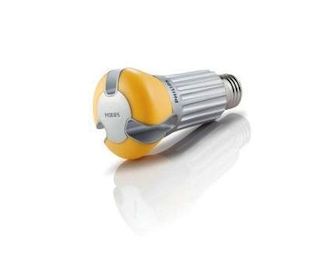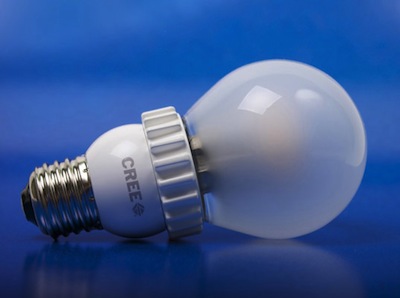LED Light Bulbs
*UPDATE 10/2014: LED light bulbs are getting better and more affordable almost every day! For example, Cree just introduced their newest generation of energy-efficient led light bulbs for under $10 each. Click HERE to learn more!*
If you're interested in greening your home to save energy, resources, and money, one of the easiest and most affordable things to do is change how you light it. In today's green home, that usually means using compact fluorescent bulbs (CFLs) instead of traditional incandescent bulbs. However, new advances in LED light bulbs may mean that the CFL's days as efficiency-leader are almost over.
LEDs: The New Kid on the Block
LED (light-emitting diode) lights work by passing electrons through a semiconductor material. That's as scientific as we'll get when explaining where an LED's light comes from.
While LED light technology has been around for awhile, the use of LEDs in residential light bulbs is relatively new. Much like the early days of the CFL, LED bulbs had some issues that most consumers could not overcome.
Researchers originally had trouble creating LED light bulbs that could produce light capable of competing with, and replacing, the warm soft light of incandescent bulbs. Also, early LED lights were not anywhere bright enough to provide enough light to fill a room.
Add to that the fact that LED light bulbs were (and still are) quite expensive, and you can easily see why they haven't taken off….yet.
The Difference Between LED Lights and Other Lights
Incandescent bulbs and CFLs emit light in all directions. LED lights emit light directed in a specific direction. For example, a CFL or incandescent bulb in a recessed can will waste half of the light it produces. A recessed LED light will project its light only downward where it's needed.
LEDs and Energy Efficiency
If incandescent light bulbs weren't such inefficient energy-wasters, we probably wouldn't be discussing LEDs today. But they are, and that has driven a search for new, more efficient lighting technology, resulting in today's CFLs and tomorrow's LEDs.
LED bulbs are on average 75% more efficient than incandescent light at producing the same level of light. The U.S. Department of Energy estimates that a rapid switchover to LED lighting in the U.S. by 2027 would deliver energy savings of roughly $265 billion. That's enough energy to avoid building 40 new coal-powered power plants, and enough to reduce the nation's electricity demand for lighting by 33%!
More Advantages of LED LIghts Over CFLs
Today's new LED lights are about as efficient as CFLs, about 75% more efficient than incandescent's. But while CFLs last much longer than incandescent, up to 7,000+ hours, LED lights can last upwards of 25,000 hours. That's a dramatic improvement in durability.
LED lights are also dimmable, while most CFLs cannot be used with dimmers. This allows LED lights to be used in a much wider number of applications around the home.
Advancements in the quality of LED light is also going to make them preferable to CFLs. LEDs can be made to create any color in the spectrum; this is going to give interior decorators and homeowners amazing new lighting choices in the near future.
LEDs contain absolutely no mercury, unlike CFLs. This means not having to worry about breaking bulbs or disposal of dead bulbs. But LED bulbs last so long, you'll probably never have to throw one out!
Energy Star and LED LIghts
The rush to get new LED products to market means that quality may suffer. To counter this, Energy Star now certifies LED lights. In order to qualify for the Energy Star label, LEDs must demonstrate the following:
- Brightness is equal to or greater than existing lighting technologies(incandescent or fluorescent) and light is well distributed over the area lighted by the fixture.
- Light output remains constant over time, only decreasing towards the end of the rated lifetime (at least 25,000 hours or 22 years based on use of 3 hours per day).
- Excellent color quality. The shade of white light appears clear and consistent over time.
- Efficiency is as good as or better than fluorescent lighting.
- Light comes on instantly when turned on.
- No flicker when dimmed.
- No off-state power draw. The fixture does not use power when it is turned off, with the exception of external controls, whose power should not exceed 0.5 watts in the off state.
LED lights are in their infancy. Costs are still quite high, and brightness is still on the low end, especially compared with CFLs, but the industry is evolving rapidly. Several companies will be introducing exciting new LED products in the next few months that will revolutionize the light bulb world.
As LED technology continues to improve and catch on with the public, prices will fall over time, much like they have with CFLs.
At Green Home Source, we are very excited about both the energy-saving and decorating potential that LED lighting will create in the coming years.
comments powered by Disqus



























































































































































































